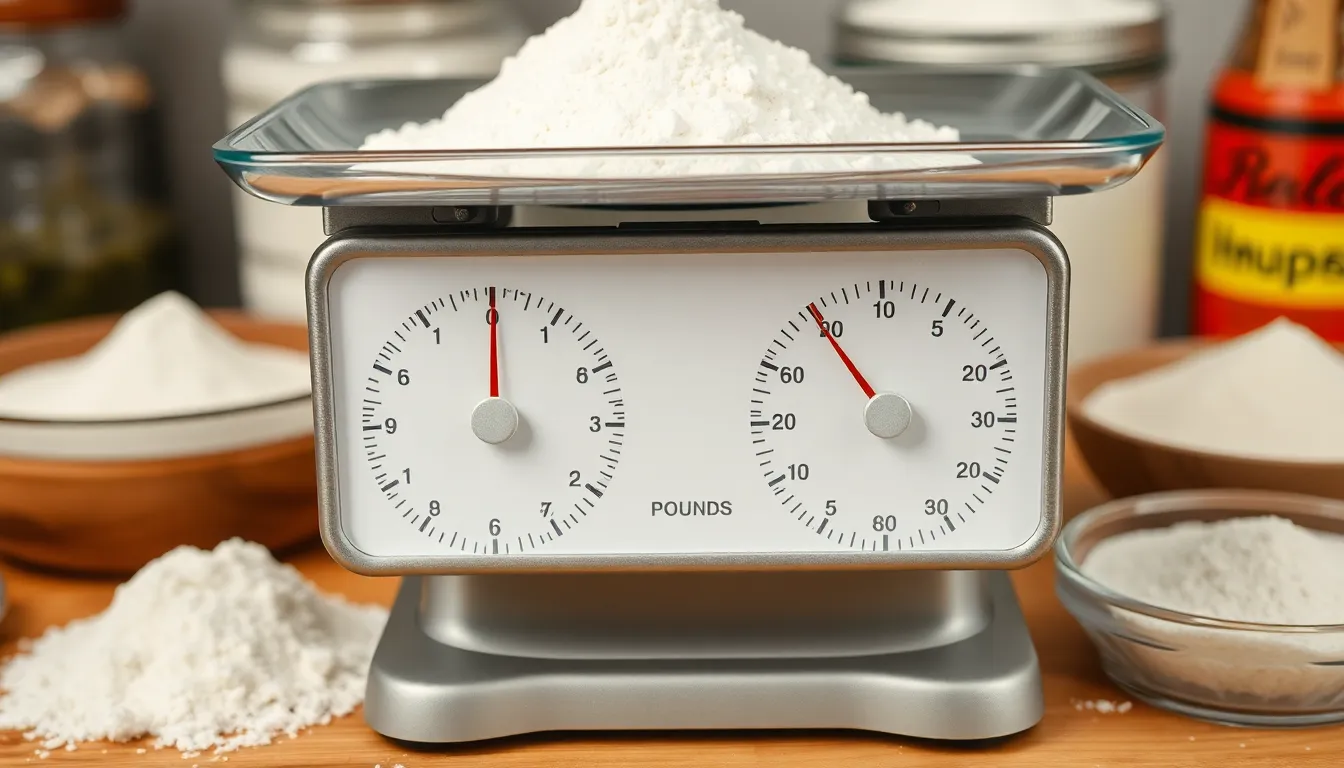Table of Contents
ToggleIn the world of measurements, understanding the conversion between grams and pounds is essential for anyone dealing with weight. Whether you’re cooking, shipping packages, or tracking fitness goals, knowing how many grams make a pound can simplify your tasks and enhance your accuracy.
A pound is a unit of weight commonly used in the United States, while grams are part of the metric system, widely adopted in most other countries. This difference can lead to confusion, but grasping the conversion can make life a lot easier. So, how many grams are in a pound? Let’s break it down and explore the significance of this conversion in everyday scenarios.
Understanding Weight Measurements
Weight measurements vary across different systems. The imperial system primarily uses pounds, while the metric system uses grams.
Pounds are widely used in the United States for everyday measurements, such as food and personal weight. One pound is equivalent to 453.592 grams.
Grams provide a more precise measurement and are commonly utilized in scientific contexts, cooking recipes, and nutrition labels. Grams allow for accurate portioning, especially in baking and dietary tracking.
Conversion between pounds and grams is crucial for various activities, including cooking and shipping. A common need arises when individuals switch from one measurement system to another, ensuring accuracy and consistency.
Here’s a quick reference for conversions:
| Pounds | Grams |
|---|---|
| 1 | 453.592 |
| 2 | 907.184 |
| 5 | 2267.96 |
| 10 | 4535.92 |
| 20 | 9071.85 |
Knowing these conversions simplifies tasks and enhances communication, especially in a global context where different systems coexist.
Grams and Pounds: A Basic Comparison

Grams and pounds serve as fundamental units of weight measurement in different systems. Understanding their definitions and applications can facilitate accurate conversions and enhance clarity in communication.
Definition of Grams
Grams represent a metric unit of mass in the International System of Units (SI). Defined as one-thousandth of a kilogram, a gram is commonly used in scientific and culinary contexts. It provides precise measurements, making it essential in nutrition labeling, cooking recipes, and laboratory settings. Grams facilitate easy conversion due to their decimal-based nature, offering consistency across diverse measurements.
Definition of Pounds
Pounds denote a unit of weight in the imperial and US customary systems. Primarily used in the United States, one pound equals 16 ounces. Pounds are widely utilized in everyday contexts, including shipping and fitness tracking. This unit reflects a broader range of weight measures and is more familiar to individuals using the imperial system, making it integral for various practical applications.
The Conversion Factor
Understanding the conversion factor between grams and pounds is essential across various scenarios. One pound equals 453.592 grams, a relationship that enables accurate conversions for diverse activities.
How Many Grams Make a Pound?
One pound consists of 453.592 grams according to the International System of Units (SI). This precise measurement plays a crucial role in cooking, nutrition, shipping, and scientific research. Conversions simplify the adjustment between these common units, facilitating effortless communication in a multi-unit environment.
Why It Matters: Practical Applications
Conversions between grams and pounds influence numerous practical applications.
- Cooking: Recipes often require specific weight measurements, and knowing the conversion allows for more accurate ingredient portions.
- Shipping: Shipping rates depend on weight; understanding conversions helps ensure precise calculations for costs and logistics.
- Fitness Tracking: Tracking dietary intake and exercise benefits from accurate weight measurements, impacting health decisions.
- Scientific Research: Precision in measurements allows for reliable experiments and data analysis, essential for scientific integrity.
Using the correct conversions enhances clarity and efficiency in various fields, supporting effective communication regardless of regional measurement preferences.
Common Conversion Scenarios
Understanding how to convert grams to pounds and vice versa simplifies various tasks across different fields. Familiarity with these conversions enhances efficiency in cooking, scientific measurement, and medical applications.
Cooking and Baking
In kitchens, exact measurements make a significant difference in the outcome of dishes. Many recipes from international sources list ingredients in grams, necessitating conversion for US cooks. For instance, one pound of flour is equivalent to 453.592 grams. Mastering this conversion assists in accurately measuring ingredients, ensuring consistency, and achieving desired results in baking or cooking. Cooking scales that display both grams and pounds offer convenience, allowing for precise ingredient management.
Science and Medicine
In scientific research, precise weight measurements are critical. Many laboratory protocols and experiments utilize grams to ensure accuracy in reagent preparation and sample measurements. For example, one pound translates to 453.592 grams, enabling reproducibility and reliability in experiments. In the field of medicine, drug dosages often require precision, and calculations in grams ensure that patients receive safe and effective treatments. Accurate measurements support the integrity of scientific findings and medical applications, highlighting the importance of conversion knowledge.
Understanding the conversion between grams and pounds is essential in today’s diverse world. With one pound equaling 453.592 grams, knowing this relationship simplifies various tasks, from cooking to shipping and fitness tracking.
Accurate measurements not only enhance the quality of dishes but also ensure safety and effectiveness in scientific and medical applications. By mastering these conversions, individuals can communicate more effectively across different measurement systems, paving the way for clearer interactions in a global context.
Embracing both grams and pounds enriches everyday experiences and promotes precision in various fields.






